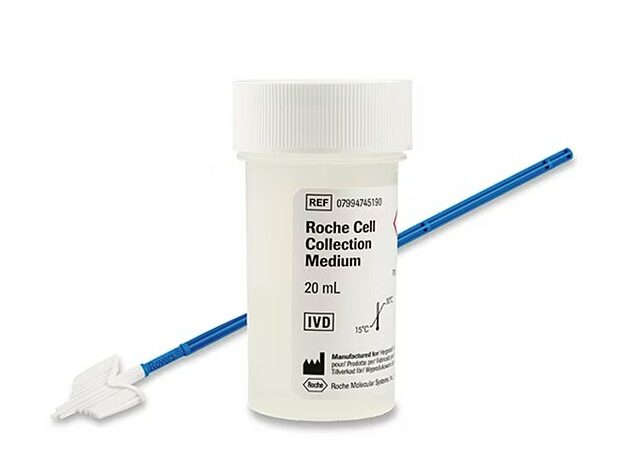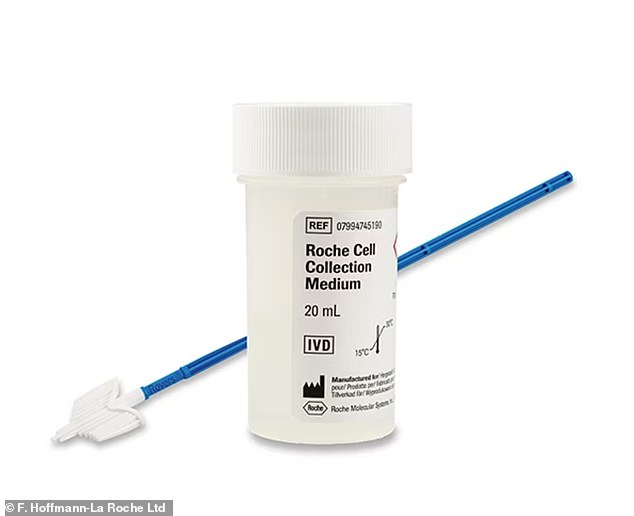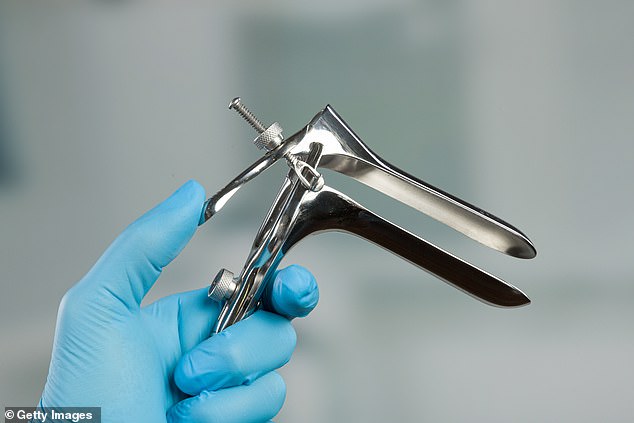Painless Pap smears to be introduced in the US within weeks – and hopes to help curb cervical cancer



Starting this fall, women will be able to take a simple swab test to detect cervical cancer, a major improvement in women’s health care.
The Pap smear, a screening test for cervical cancer, can be so unpleasant that women choose not to go to the doctor.
About eight million women who should have been screened for cancer have not been to the doctor in the past five years.
The delay in care translates into more women unknowingly carrying the human papillomavirus (HPV), the leading cause of cervical cancer. And the later the diagnosis, the harder the cancer is to treat.
The current outpatient procedure uses a device called a speculum, a cold metal device shaped like a duckbill that is inserted into the vagina and widens it so that the doctor can take a smear of cells from the cervix.
Besides being physically uncomfortable, it can also be emotionally taxing, especially for people who have experienced sexual abuse.
But there is a new model for cervical cancer screening that allows women to bypass the speculum altogether.

The recently approved Roche HPV test allows women to test themselves instead of lying down with their legs in stirrups. The sample is sent to a lab that tests for HPV, the cause of 95 percent of all cervical cancers.
In May, the FDA approved two self-sampling cervical cancer screening devices from pharmaceutical companies Roche and Becton, Dickinson and Company.
The tests are performed in the same way as a traditional Pap smear in a doctor’s waiting room. Instead of women lying down with their legs in stirrups while the doctor performs the uncomfortable procedure, the new tests allow them to swab their own vaginal canal and leave a sample with the doctor, just as they would leave a urine sample.
In a traditional Pap smear, the doctor takes a swab from the cervix, deposits the sample on a microscope slide and sends it to a cytopathologist, a lab technician specially trained to examine cells under a microscope.
The main purpose of a Pap smear is to identify abnormal cells in the cervix that may indicate cervical cancer or a precancerous condition.
The newly approved self-samples are sent to laboratories that can now test samples from the vaginal walls instead of the cervix.
The lab tests the sample for HPV strains most likely to cause cervical cancer.
Dr. Karen E. Knudsen, CEO of the American Cancer Society, said: ‘Almost all cervical cancers are caused by a persistent infection with certain types of HPV.
‘Collecting cancer data yourself increases access to screening and lowers barriers, giving more people the chance to detect, treat and ultimately survive cancer.’
The laboratory will forward the results to the physician who requested the test. The physician will then discuss the results with the patient.
By detecting possible HPV, the doctor can then determine whether the patient is at risk of developing cervical cancer by testing for precancerous cancer.
Dr. Shieva Ghofrany, gynecologist and member of the American Congress of Obstetricians and Gynecologists, said: ‘The integration of self-collection with testing for individualized strains of HPV represents an important advance in cervical cancer screening.
‘Self-collection offers better access to testing and [the Becton, Dickinson and Company test] ‘This will allow healthcare providers to determine the specific HPV strains in the samples and more accurately identify and treat individuals at high risk, while avoiding unnecessary treatments for women at low risk.’

The speculum is a cold metal device shaped like a duck’s beak that is inserted into the vagina and widens it so that the doctor can take a smear of cells from the cervix
But a growing wave of women is challenging the entrenched idea that women’s health care is painful and must be accepted.
By detecting a possible HPV infection, the doctor can determine whether the patient is at risk for cervical cancer. He can do this by testing for precancerous changes in the cells of the cervix.
Researchers hope to take their innovation to the next level and introduce home testing, eliminating the need for potentially uncomfortable and painful doctor visits.
It would work similarly to colorectal cancer screening kits: A woman would take a swab from her vaginal canal, package it, and send it to a lab, which tests for HPV. If the test comes back positive, the patient and her doctor can discuss next steps
The Pap test has remained relatively unchanged since its introduction in the 1940s. It was a revolutionary medical development that helped reduce cervical cancer rates by 70 percent from pre-screening days.
But a growing wave of women is challenging the entrenched idea that women’s health care is painful and must be accepted.
The dreaded IUD, a notorious and painful form of contraception, is currently undergoing a metamorphosis.
Experts from Swiss technology company Aspivix have developed an alternative method that uses suction to manipulate the cervix, reducing pain by three-quarters, a study has found.
The symptoms of menopause also receive the necessary attention. There are several drugs in the pipeline that are specifically aimed at menopause.
The FDA last year approved the first-ever drug specifically designed to treat hot flashes caused by menopause. About 80 percent of menopausal women experience hot flashes.




